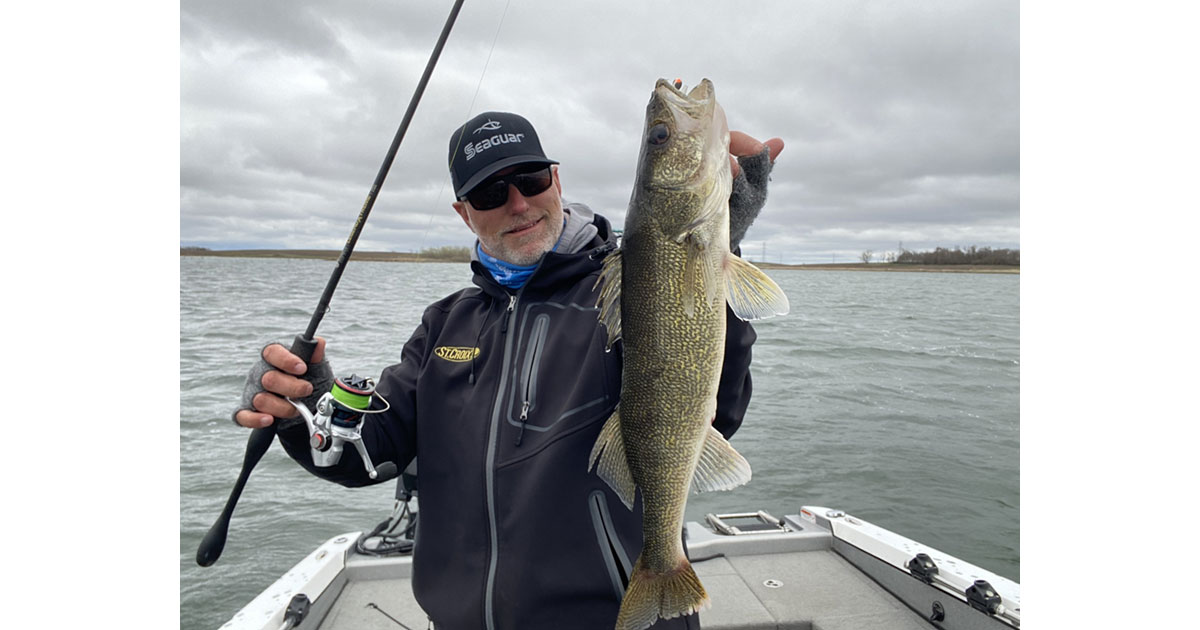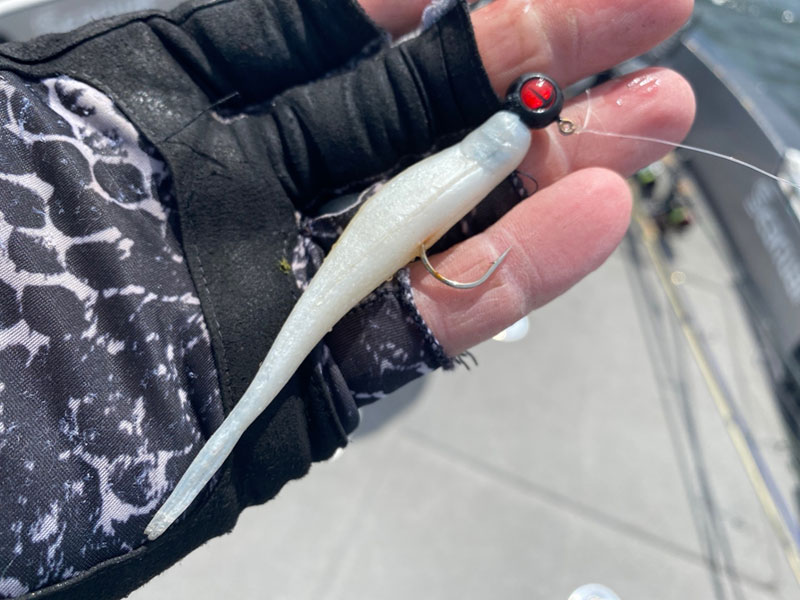Seaguar Report
 National Walleye Tour pro and owner of The Walleye Guys guide service, Brian Bashore
National Walleye Tour pro and owner of The Walleye Guys guide service, Brian Bashore
Fishing electronics have continued to make our lives easier when locating cover, structure, and fish. These underwater eyes are highly effective tools that reduce the time to find productive fishing areas, no matter what species you target. For National Walleye Tour pro and owner of The Walleye Guys guide service, Brian Bashore, his electronics are vital for finding walleyes.
Forward-facing sonar is the hot trend in the fishing world right now, and Bashore utilizes it, but the entire package of side-scan, 2D sonar, 360-imaging, and down-scanning technology all play a role in his fishing. They work together and help reinforce what he finds on the water, each playing a pivotal role in helping him and his clients catch more walleyes.
If He Could Only Pick One
Of all the different sonar technologies available today, Bashore would choose Humminbird Side Imaging if he could only have one on his boat. It's crucial to his efforts, and he generally uses it first before refining his approach with forward-facing sonar and standard 2D sonar.
"Ever since it came out, that's been my No. 1 sonar," said Bashore. "You could take everything else from me but leave the side imaging. It's great for finding fish and telling me what baits I need to catch them."
Bashore tends to stick relatively shallow for walleye, and his side scanning tells him what the fish are doing and where they are sitting in the water column.
"One thing I do is run on 455kHz, which is a lot less power than the MEGA, but I feel it gives you a better picture and you'll see a lot more fish by turning that down," he said. "I can see if the fish are in 18 feet of water, but they are down 5 or 8 feet, then it tells me to troll. If I see them closer to the bottom, you can drag bottom bouncers or jig for them."
With the key knowledge of where the fish are, Bashore will change his approach accordingly. When trolling, he prefers a lead core line, a crankbait such as a Berkley Flicker Shad, and a leader of 15 or 20 pound Seaguar Gold Label fluorocarbon.
"If I'm pulling lead core with Flicker Shads, I tend to use a short 5 to 10-feet leader of Gold Label," he said. "It's a strong line and very abrasion-resistant, which is important when trolling around trees and rocks. Plus, many of the fisheries that I fish are absolutely covered with zebra mussels and those suckers are sharp. The abrasion resistance is great; all you need to do is check your line and re-tie occasionally."
When guiding or tournament fishing, Bashore uses his side scan to mark likely areas and then make a path for his trolling. "I'm generally looking for weed lines, rocks, and deep trees," he said. "I'll drive and mark all those with waypoints and create a mile-long path to troll. Along that path, you'll notice some hotspots where you get bites, and then you can come back, sit on them, and cast to those areas."
Forward-Facing Walleyes
When Bashore finds active fish by trolling or simply scanning with his forward-facing sonar, he typically casts to individual fish he sees on his screen. This approach has proven highly effective in the walleye tournament world, and Bashore says it has won most recent events.
 Northland Tungsten Jig and a white 4-inch Z-Man Jerk ShadZ
Northland Tungsten Jig and a white 4-inch Z-Man Jerk ShadZ
"On some fisheries with big walleye populations, anglers are searching for bigger fish and not wasting time unless they see big walleye," he said. "If you find a school, they will generally be the same size and better caliber fish. I've found success casting to them with a ¼-ounce Northland Tungsten Jig and a white 4-inch Z-Man Jerk ShadZ; the lighter the head, the better, and because of the buoyancy of the bait, you'll get a nice hovering action. I'll only go up to a 3/8-ounce head when fishing heavy current or deeper water."
Another way that Bashore utilizes his forward-facing sonar is for fish higher in the water column. In these instances, he likes a slip bobber rig and a live leach.
"You can set the bobber to whatever depth the fish are. You can watch them checking out the leach dancing around before they eventually come and get it," he said. "It's not always easy, but it helps when you find suspended fish. “The other thing I've learned about forward-facing sonar is how much you can tell about the fish, how much they are moving, and whether or not they are active. Plus, just seeing fish out there will at least tell you there's fish around and give you confidence in the area."
For both his jighead and minnow rig and slip bobber, Bashore prefers a spinning setup with a 10 pound Seaguar Smackdown Flash Green braid with Seaguar Gold Label fluorocarbon leader.
"I use either 10 or 15 pound Gold Label depending on where I'm fishing and will use 15 pound if there are a ton of zebra mussels or if I'm fishing a place with a lot of big walleye like Lake Erie or Green Bay," said Bashore. "Smackdown is tough as nails and very sensitive to detect light bites. Plus, it casts great, too."
2D Sonar, Down, and 360-imaging
In addition to side- and forward-scanning sonar, Bashore relies on everything else available to him. They all play a role for him, complement each other, and aid in his search.
"Traditional 2D sonar is something I still use, especially when running the boat," he said. "I have a high-speed transducer, and I crank up my sensitivity to run 40 miles per hour down the lake. I still see it when I come across a pod of bait or a school of walleye. Then, I can slow down and get a more detailed look with my Down Imaging. I can also spin around, put down the trolling motor, and get a better look with my Garmin LiveScope."
His Humminbird 360 also gets a workout, especially during the spring and when he is fishing with clients. "It's great early in the spring when many fish are shallow," he said. "It's helpful all year long when I'm fishing shallow because there are always some fish shallow, and if they are up there, they're there to eat and are generally easier to catch. The 360 gives me a great view of everything around me, and even when my trolling motor is on Spot-Lock, I can see targets to cast to or point out where my clients should be casting."





